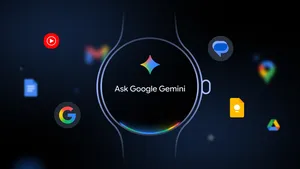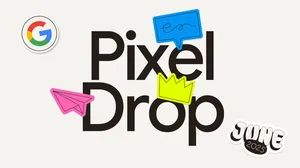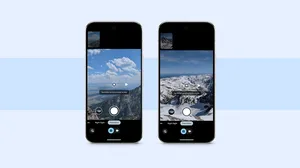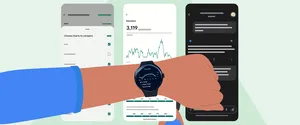How Google Pixel Watch 2 and Fitbit Charge 6 improved heart rate tracking

A lot of us use our smartwatches and fitness trackers to track important health metrics, like how well we slept or whether our stress levels are high. Many of those insights wouldn’t be possible without heart rate tracking. "It's really the basis for so much," says DeCarlos Love, a wearables product manager who works on Google Pixel Watch and Fitbit devices.
When Google acquired Fitbit in 2019, the wearables team knew that bringing in deep expertise with wearables and a history of heart rate tracking would benefit future products — like the Google Pixel Watch. Now, the just-launched Google Pixel Watch 2 and Fitbit Charge 6 both feature our most accurate heart rate tracking yet on a smartwatch and tracker 1 . Here’s what’s going on underneath the hood that makes it all possible.
It starts with sensors
If you, like me, thought that smartwatches and fitness trackers measured heart rate by feeling that “bump bump bump” vibration of your pulse on your wrist, you would be wrong. Well, sort of wrong. “When you think of taking someone’s pulse, you imagine putting two fingers on their neck and picking up on the beat or vibration of their heart,” DeCarlos says. “But with heart rate sensors, that’s not quite what they’re doing.” Instead of feeling something, the sensor is seeing something.
Specifically, a PPG sensor — PPG is short for photoplethysmography. A PPG sensor uses light to measure the volume and movement of your blood circulation. It does that by shining a green LED light onto your wrist, which then reflects the movement of your blood back to the sensor. “We pick up that rate of reflection and we’re able to understand how your blood is flowing — aka, your heart rate,” DeCarlos says.
While the original Pixel Watch had a single path PPG sensor, the new Pixel Watch 2 features a brand new multi-path LED sensor. Having multiple LED and photodiodes (a device that detects the amount of light reflected by blood) helps the watch cover more surface area on your skin, DeCarlos says, which gives you more accurate recordings when all sensors are activated.
A look at the back of the Google Pixel Watch 2: Here you can see the multi-sensor system.
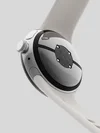
Of course, how hard these lights work depends on what mode you select. Passive all-day tracking helps extend the battery life of Pixel Watch 2, while exercise mode — which powers on all of the sensors' lights — is great for capturing heart rate data while you're moving vigorously, like during a HIIT workout.
Using all the sensor lights at once helps combat one of the trickiest challenges for heart-rate tracking devices: movement. “Motion is like kryptonite for heart-rate tracking,” DeCarlos says. The added light pathways and power behind them helps improve the sensor’s ability to gather data — even during intense exercise. In fact, the update makes heart rate tracking 40% more accurate for vigorous activities like HIIT, spinning and rowing 2 .

Once this process begins and the lights are reflecting information to the sensor, that’s where the algorithms come in.
Even better algorithms — thanks to AI
For Pixel Watch 2, the team developed an improved algorithm, powered by AI. “These new devices grab more heart rate-related data,” DeCarlos explains, “And now we can give it to these advanced algorithms — because AI algorithms are really good at knowing what to do with even more data.” That same core ML algorithm is at work in the Charge 6, which is notable given that the Charge 6 is a fitness tracker and not a smartwatch. “We brought these algorithmic advancements from Pixel Watch and optimized them for the lower-powered processor and operating system of the Charge 6,” DeCarlos says. “And we even did extra development work so that despite the added compute load, the Charge 6 still has a seven-day battery.”
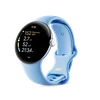
And the algorithms have gotten better and better over time, in part thanks to tons of testing, DeCarlos says. “When we first started working on this, I would do things like go out and run on the beach to try and break the algorithm — I wanted to try movements it hadn’t seen, or do things that would really suddenly spike my heart rate so that we could validate against different scenarios.” The heart rate team didn’t just train the algorithms on different types of movement. They considered a variety of factors, including skin tone, age, gender and differently lit environments. “The depth and development of our testing is something we’ve made a ton of progress with,” DeCarlos says. “It’s important to us that we pioneer the best way to actually test our devices so they can give people high quality data and insights.”
The HR sensors and our improved AI-led algorithms are all part of what enables the Pixel Watch 2, Fitbit Charge 6 and the Fitbit app to give you a Daily Readiness Score 3 that tells you you’re ready for a hard workout, that you need rest, or that you can pick up the pace a little bit. And it all starts with getting an accurate read of your heart rate. “It’s what helps these devices allow you to achieve your fitness goals,” DeCarlos says. “And ultimately, live a healthier life.”

